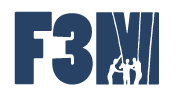Resources

In an employment assistance community organization, asylum seekers are offered jobs in slaughterhouses that will allow them to restart lives they were abruptly forced to leave behind. On a livestock farm, cows, pigs, and farmers are subjected to the rhythm of an industrial agricultural model. Outside, only the corn plants that serve to feed the animals pierce the aridity of desert-like soil. _Resources_ explores the living conditions of humans, animals, and plants interconnected by the meat production and transformation chain. By following various actors captured by this chain, the film observes a shared state of precariousness beyond the boundaries of species.
| Directors | Hubert Caron-Guay, Hubert Caron-Guay, Serge-Olivier Rondeau |
| Actors | Sylvain L'espérance, Sylvain L'espérance |
| Share on |
Like an X-ray revealing the skeleton of a body, _Resources_ introduces us to the elements that structure the slaughterhouse industry: the animal resource and the labor force, food production and the factory. With a keen eye, the filmmakers accompany asylum seekers through the process of being hired by Olymel in Quebec. In need of employment, they are put in touch with the company that needs workers. They are hired, housed and given francization courses.
On the other side of the chain are the animals: pigs fattened up for slaughter, and cows raised for their milk. In between, the corn used to feed them is cultivated in vast fields. At the end of the chain, the factory where everything converges.
According to the company, the conditions it offers are the best of all possible worlds for workers, animals and the environment. But the presence of a dog, wandering freely between the aisles of the barn, opens the eye to another perspective. We see him licking the placenta after the birth of a calf, drinking water from a container attached to the pen of a cow licking her muzzle. His freedom makes him a silent witness to what goes on behind the scenes. The animals will end up in the slaughterhouse, and their lives will have been nothing but servitude. The cows are chained to a pen, the young calf is constrained by a halter from birth, and the pigs are crammed together, looking for a way out that will only lead them to the slaughterhouse.
Towards the end of the film, we find Paulo Cesar in the middle of winter, after a few months' work. His silence and the look in his eyes tell us that he knows the freedom he was promised when he was hired - "It's up to you to choose what you want", he was told - doesn't exist, and that his life at the factory is one of subjection. The strength of _Resources_ lies in its ability to reveal to us at once the condition of men, women and animals whose destinies are bound together by what might be called a common cause.
Sylvain L'Espérance
Filmmaker
Presented in collaboration with

-

Français
1h39
Language: Français -

English
1h39
Language: English
- Année 2021
- Pays Quebec
- Durée 99
- Producteur Les Films de l'Autre
- Langue French, Spanish
- Sous-titres French, English
- Résumé court The living conditions of humans, animals, and plants interconnected by the meat slaughter and processing chain.
Like an X-ray revealing the skeleton of a body, _Resources_ introduces us to the elements that structure the slaughterhouse industry: the animal resource and the labor force, food production and the factory. With a keen eye, the filmmakers accompany asylum seekers through the process of being hired by Olymel in Quebec. In need of employment, they are put in touch with the company that needs workers. They are hired, housed and given francization courses.
On the other side of the chain are the animals: pigs fattened up for slaughter, and cows raised for their milk. In between, the corn used to feed them is cultivated in vast fields. At the end of the chain, the factory where everything converges.
According to the company, the conditions it offers are the best of all possible worlds for workers, animals and the environment. But the presence of a dog, wandering freely between the aisles of the barn, opens the eye to another perspective. We see him licking the placenta after the birth of a calf, drinking water from a container attached to the pen of a cow licking her muzzle. His freedom makes him a silent witness to what goes on behind the scenes. The animals will end up in the slaughterhouse, and their lives will have been nothing but servitude. The cows are chained to a pen, the young calf is constrained by a halter from birth, and the pigs are crammed together, looking for a way out that will only lead them to the slaughterhouse.
Towards the end of the film, we find Paulo Cesar in the middle of winter, after a few months' work. His silence and the look in his eyes tell us that he knows the freedom he was promised when he was hired - "It's up to you to choose what you want", he was told - doesn't exist, and that his life at the factory is one of subjection. The strength of _Resources_ lies in its ability to reveal to us at once the condition of men, women and animals whose destinies are bound together by what might be called a common cause.
Sylvain L'Espérance
Filmmaker
Presented in collaboration with
-

Français
Duration: 1h39Language: Français1h39 -

English
Duration: 1h39Language: English1h39
- Année 2021
- Pays Quebec
- Durée 99
- Producteur Les Films de l'Autre
- Langue French, Spanish
- Sous-titres French, English
- Résumé court The living conditions of humans, animals, and plants interconnected by the meat slaughter and processing chain.

